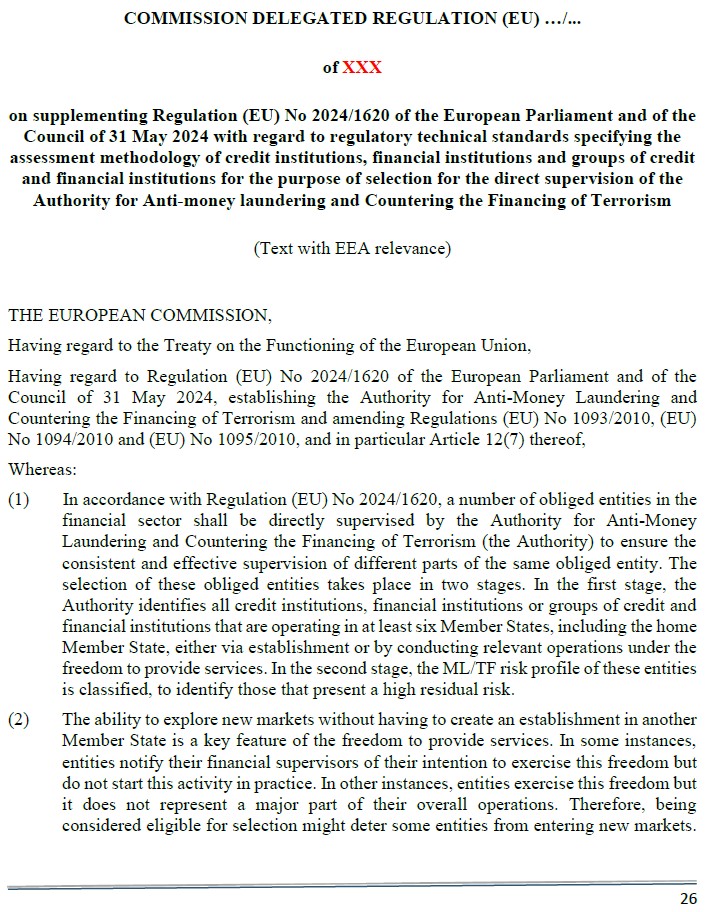
EBA Draft RTS on the Risk Assessment for AMLA Supervision under Article 12(7) AMLAR
The Draft Regulatory Technical Standard (RTS) under Article 12(7) of Regulation (EU) 2024/1620 (AMLA Regulation) sets out a uniform risk assessment methodology for identifying credit institutions, financial institutions, and financial groups that should fall under the direct supervision of the European Anti-Money Laundering Authority (AMLA).
What Is the Purpose of This Draft RTS?
This RTS defines how to select high-risk, cross-border financial institutions for direct AMLA supervision. It introduces clear quantitative thresholds and a harmonised risk-based selection model to ensure that supervisory focus is directed toward entities with:
- A large geographic footprint
- A high residual ML/TF risk profile
Who Is Subject to AMLA Direct Supervision?
The RTS applies to:
- Credit institutions
- Financial institutions
- Groups of such institutions operating across borders within the EU
To qualify, an entity must:
- Operate in at least six EU Member States, and
- Meet activity thresholds in each of at least five host states:
- ≥ 20,000 resident customers or
- ≥ €50 million in transaction volume (incoming + outgoing)
Standardised Three-Step Risk Assessment
1. Inherent Risk Classification
Based on customer base, product complexity, delivery channels, and geographical exposure. Scored from 1 (low) to 4 (high).
2. AML/CFT Controls Assessment
Evaluates the effectiveness of internal governance and compliance systems. Scored from 1 (very good) to 4 (poor), using supervisory data.
3. Residual Risk Calculation
Combines inherent risk and control quality:
- If controls are weaker → residual risk = inherent risk
- If controls are adequate → residual risk = average score
For groups, a weighted residual risk score is calculated across all EU-based entities using metrics like AUM, turnover, and transaction volumes.
Why This RTS Matters
This RTS enables AMLA to:
- Identify high-risk, cross-border institutions
- Apply consistent selection criteria across all Member States
- Allocate supervisory resources more effectively
- Strengthen EU-wide AML/CFT oversight
It also limits regulatory discretion, ensuring transparency and comparability in the selection process.
Transition and Enforcement
During the initial implementation phase, the selection will be entirely data-driven with no manual overrides. The RTS will become binding after adoption and entry into force, aligning all national practices with AMLA’s supervisory model.
Source: